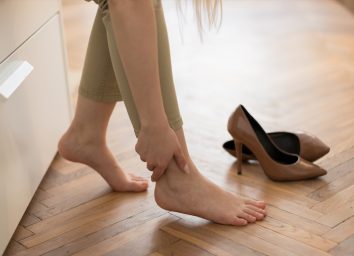Bad Walking Habits You Should Stop Immediately, Say Walking Experts
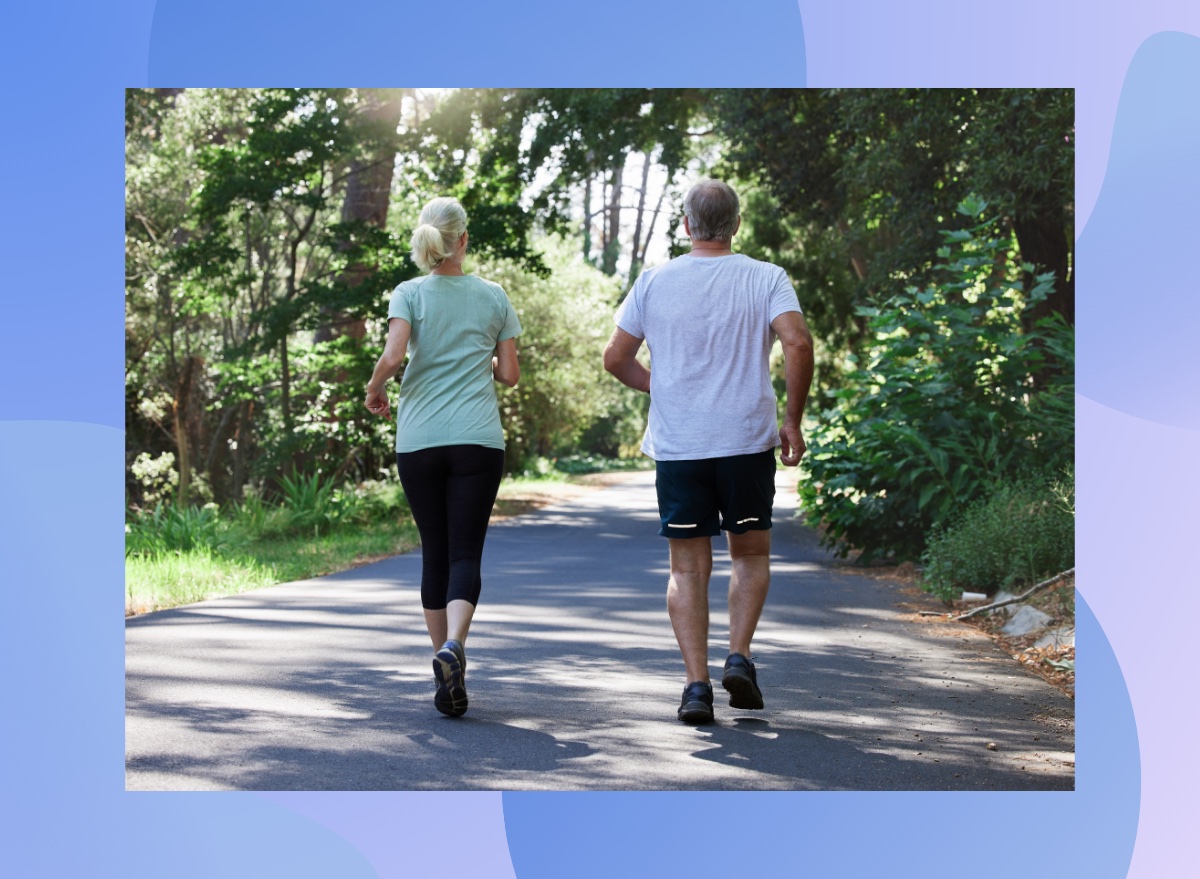
Fun fact: There's no such thing as a "perfect" walker, as our gaits never follow a robot-like consistency. One study, conducted by the Movement Lab at Ohio State University and published in the Biology Letters, found that for every step we take, our bodies continually work to correct errors in our kinetic chains. If we tip forward in one direction, for instance, our steps will correct by moving farther in that direction. "We are constantly making little corrections to be stable," observed one graduate student who worked on the study.
Given all of our little imperfections as we carry our bodies down the road, up trails, and around tracks, it's all the more important that you avoid a simple list of no-nos that are proven to be bad walking habits for your body—especially if you're a more serious walker who is trying to go faster, boost your intensity, and try to burn fat and potentially lose weight. Curious to know what they are? What follow are five bad walking habits you need to break now. And for another major mistake you shouldn't make while walking, see here to learn why These Are the Single Worst Shoes for Walking, Says New Study.
You're Walking with Straight Arms
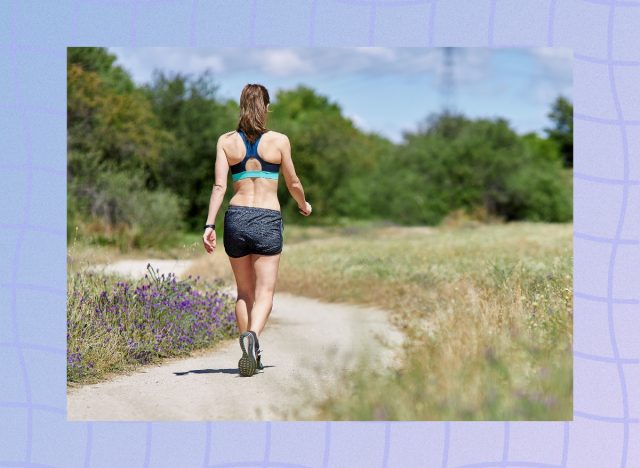
A quick physiology lesson: When you walk with straight arms that swing, you'll actually be slowing yourself down. Meanwhile, if you look at anyone who is a runner, their arms are always bent, and usually at roughly 90 degrees. According to a study published in The Journal of Experimental Biology, humans tend to straighten their arms while walking slowly and bend them while running. It's something we do for an efficient transfer of energy through our bodies.
But if you're taking brisk walks—which are key for experiencing the full benefits of walking for exercise and maximizing your calorie burn—you need to be sure to bend your arms more like a runner, advise walking experts. Keep your arms bent 90 degrees, and keep your elbows tucked in closer to your sides. That way, your arms will drive backwards and forwards, and you'll have a much more efficient transfer of energy. For more on the health benefits of walking see here for the One Major Side Effect of Going on a Single 1-Hour Walk, Says New Study.
You're Exercise Walking with Your Partner

A new study published in the journal Gait & Posture found that couples who go walking together also end up walking at a much slower pace. If the couple was the hand-holding type? Their speed went down even further. "If someone substantially slows down when they are walking with someone else, that could negate some of the health benefits recognized if they walked alone at a faster pace," said Libby Richards, Ph.D., MSN, RN, CHES, an associate professor of nursing at Purdue University, which conducted the study. So if you want to maximize your walking workouts, consider going rogue.
You're Not Walking Erect
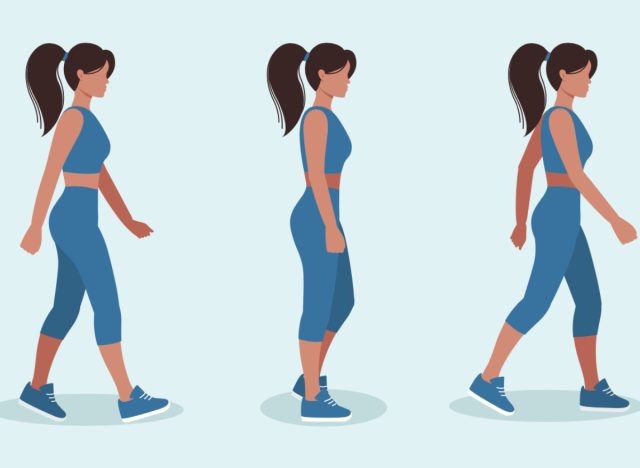
"Many walkers get hurt because they simply don't walk erect," Bonnie Stein, M.Ed., CPTS, a racewalking coach based in Florida, described to Prevention. To rectify, keep your head high so that your spine and neck are essentially a straight line that are perpendicular to the ground. Always look forward—"experts' advice on the distance ranges from 10 to 30 feet ahead," says Prevention—and keep your shoulders relaxed, back, and in.
The walking experts at Bristol Nordic Walking offer this handy mental trick: "Think of your neck as part of your spine as a whole rather than a separate entity and try to increase the space between your vertebrae, expanding it like the bellows of an accordion." And for more on walking for better health, make sure you're aware of The One Major Side Effect of Going on Single 1-Hour Walk, Say Experts.
You're Taking Super Long Strides
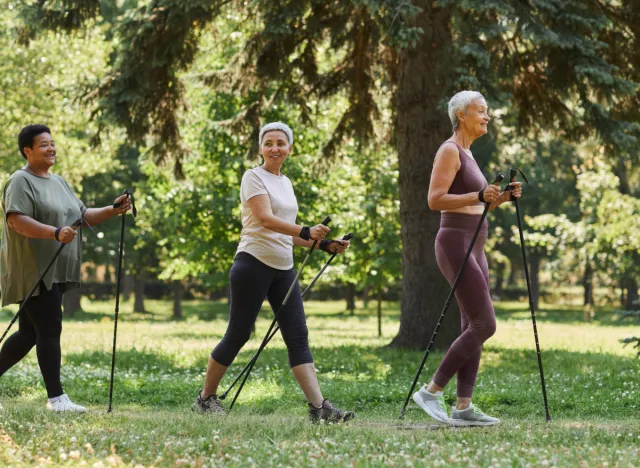
This is something all too common among walkers who are looking to increase their speed and their cardiovascular fitness. "Overstriding occurs when, during an effort to increase stride length, the knee locks as you reach with the lead foot," describe the experts at SportMedBC. "The lead foot then lands in front of your center of gravity, causing jarring and braking. In this position, the knee is less able to absorb shock and sooner or later pain results."
To correct this, you need to take shorter, faster steps, and "be sure that with each stride your foot strikes the ground under your hip and with the knee slightly flexed."
Though it may seem counterintuitive to walkers, "shorter, quicker steps are the key to going faster," advise Leslie Bonci, MPH, RD, CSSD, LDN, and Michele Stanten, in the book Walk Your Butt Off! "Shorter, quicker steps allow for a smooth, rolling stride, and they make it easier for you to shift your body weight over your front leg and swing your back leg forward."
Walking in Heavily Polluted Areas Near Lots of Car Traffic
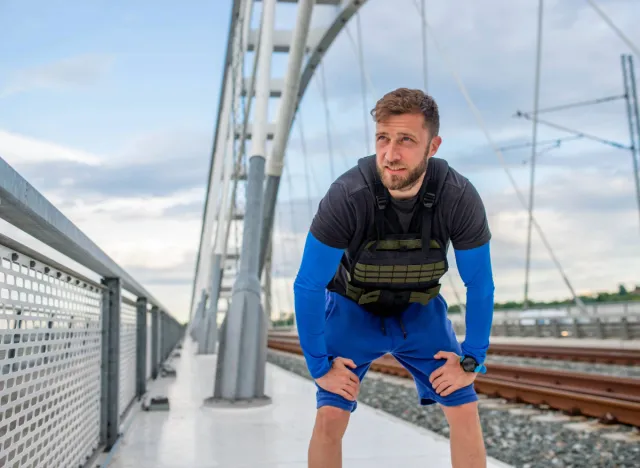
According to a UK study of older walking participants—many of whom suffer from heart disease—which was published in the journal The Lancet, walkers who took their walks down a polluted street didn't experience all of the cardiovascular gains associated with the walk. According to the study, walking through these polluted areas "prevents the beneficial cardiopulmonary effects of walking. Policies should aim to control ambient levels of air pollution along busy streets in view of these negative health effects," concludes the study. Any walking is probably good walking, but maybe don't make a habit out of fitness walking down busy thoroughfares.
You're Constantly Landing Flat-Footed on the Ground
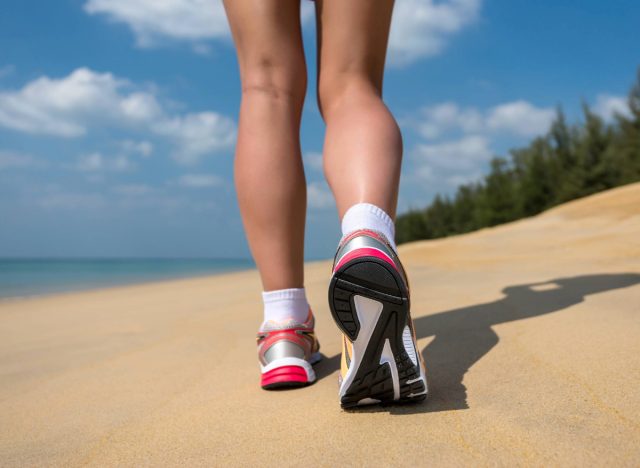
If you hear a smack when your foot hits the ground, chances are you're doing it all wrong. Not only is this bad for the smooth transfer of energy that walking requires, but it also may lead to pain. Instead, you should embrace the roll of the movement.
"To be a better walker, your heel should strike the ground first, then roll to the ball, then push off the big toe," says Joe Vega, C.S.C.S., the founder of The Vega Method. And for really ramping up your daily walks, see here for 4 Amazing Ways to Lose Weight While Walking for Just 20 Minutes, According to a Top Trainer.
You're Not Pushing Yourself Enough

The key to getting fitter and leaner while walking is to improve your intensity, vary your workouts, and even trying your hand at walking intervals. The key to walking better for improving your fitness is to ensure that you're getting your heart rate up and you're working harder each time you go out. This, of course, means taking a "brisk walk," which is defined by the UK's National Health Service as a walking "about 3 miles per hour." For more on this, see The Secret Trick for Walking for Exercise, Says Harvard.

